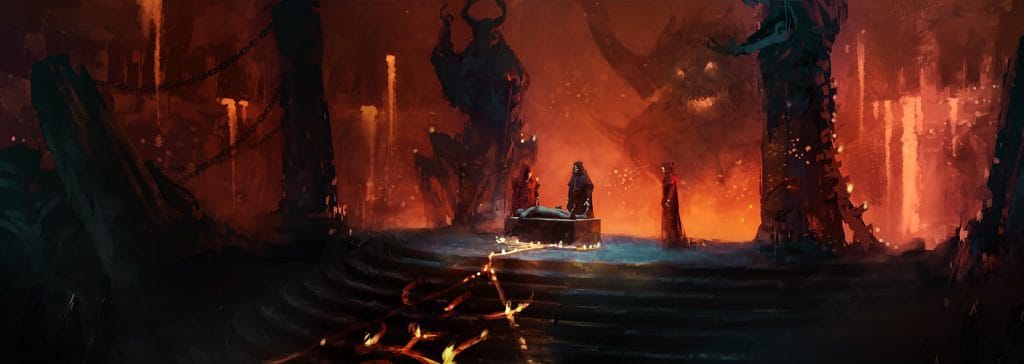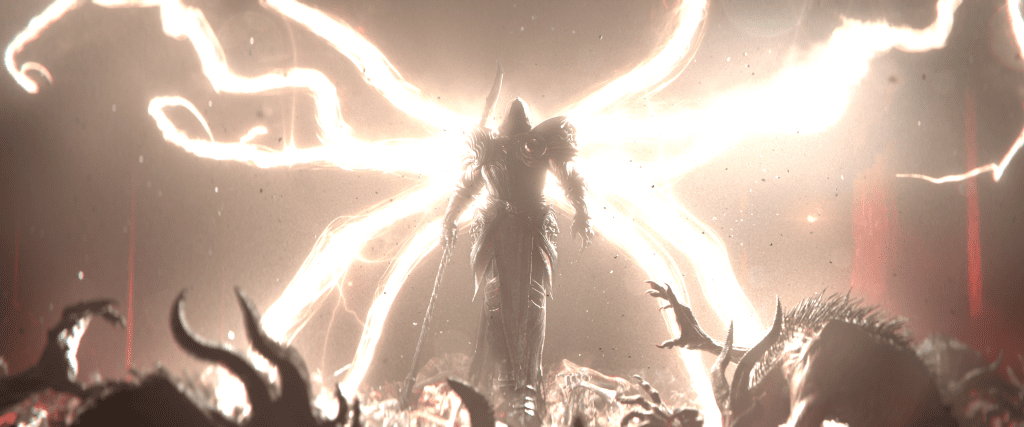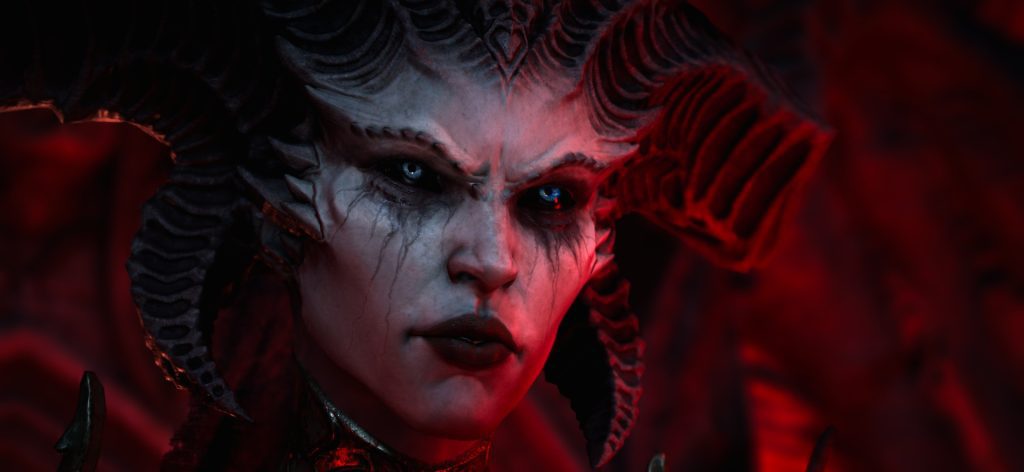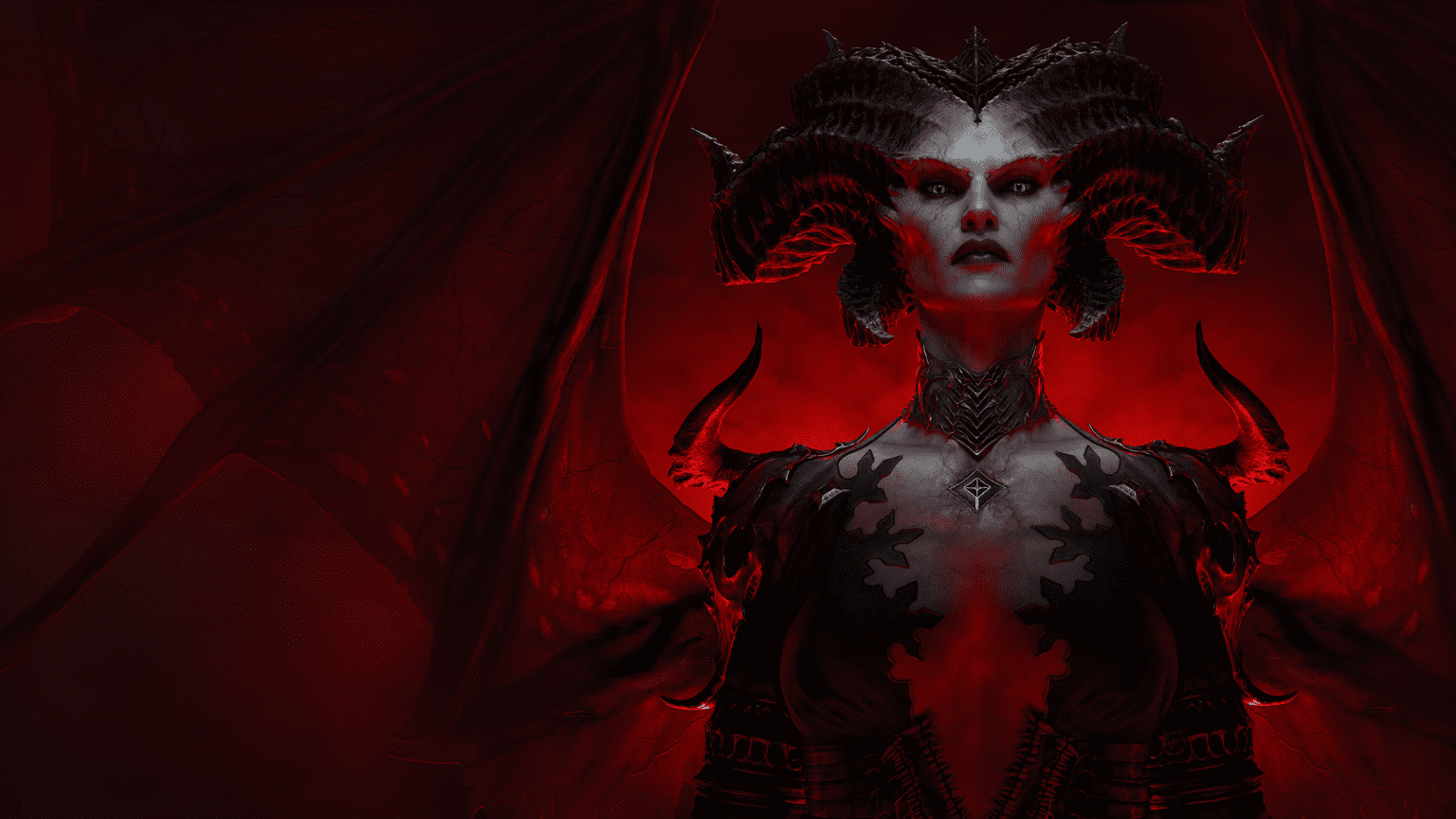The world of Sanctuary has been under assault from demonkind for a few months now. In contrast to the dark world it portrays, Diablo IV is a well-reviewed game among critics… with less love among fans. The story, for instance, was considered a highlight of the game by the majority of reviewers. The atmosphere and world-building of Sanctuary is the key to the success that Diablo IV (aka D4) has enjoyed.
And it’s the story that I want to hold the game accountable for, since it’s a troubling view of tragedy that permeates several forms of media and art, especially in recent years. Let’s take a look at it from the ground up.
MAJOR SPOILER ALERT. This review is going to look in-detail at many different aspects of the story of Diablo IV, released on June 5 by Blizzard Entertainment for PS4, PS5, Xbox X/S, Xbox One, and PC. It is unavoidable for there to be spoilers in this piece. If you are interested in the campaign and want to pick up the game yourself, we’d recommend doing that before diving further into this.

Hell on Earth
When looking at Diablo IV’s campaign, it’s easy to see where many fans hold it in the limelight. There are quite a few good quality characters and the main cast are plucky without being annoying. That being said, it is with the concept and direction of the story that I take issue.
The First Half of Diablo IV’s story
The campaign begins with your character helping a village with a demon infestation, only to get drugged during a celebration and taken to a barn out back.
This must be a sign, because your character never celebrates a single thing ever again.
The first three acts are dedicated to the three main NPC characters of D4: the Horadric Student Neyrelle and the Horadric members Donan and Lorath. They each get their own sidestory which showcases their personalities and the troubles that surround them in Sanctuary, as they aim to fight the game’s major villain, the demon Lilith.
And at no point, at any time in the first half of Diablo IV is your character depicted winning, enjoying a victory, or given any source of levity.
Now, that being said, this is not a terrible thing for a tragic story featuring a hero character. In most stories, the first half is typically dedicated to the main character stumbling over obstacles as they discover truths about themselves and the environment around them. They learn about their opposition and battle against them in unique ways.
However, by not employing some form of levity in the first half, Diablo IV dedicates their environment to the bleak atmosphere of a world conscripted entirely to hell. At the end of Act III, Neyrelle’s mother has been taken out, Donan’s son brutally murdered, and Elias, the Hand of Lilith, has escaped completely unharmed. For Neyrelle and Donan’s acts, there is no positive moment to be gained from the encounters, other than them agreeing to join the fight.
A Chance To Smile?
For Lorath’s section, we gain an artifact: The Sightless Eye. This is a great thing! Sure, we sacrificed a demented old man for it, but we can now track Lilith from afar and figure out what she is doing. Cause for celebration, right?
No.
We move on. We go to a chapel, use the Sightless Eye, and are informed of Lilith’s plan to devour Mephisto and become significantly stronger.
This information is the only leg-up on the bad guys that you get as part of Acts 1-3 of Diablo IV’s story. And it is seen as a grim reminder of the fact that we’re not strong enough to face her.
Once again, in the first half of a hero’s journey, this isn’t necessarily a bad thing. Not celebrating victories is a bit macabre, but we have a time limit. Surely, as the plot pans out, we’ll have our chance to win!
The Second Half of Diablo IV’s story
…Uh oh.
Acts 4-6 of Diablo IV have a linear structure. Act 4 sets up a summoning ritual, Act 5 prepares us to head into hell, and Act 6 is hell itself. It’s a fairly standard story structure – the hero leaves struggles, learns from their mistakes, and leaves to fight a larger evil. Then, after the final conflict, the hero returns home, the status quo maintained or the world changed in their image.
Each of these acts offer moments where the player and their party are finally getting legs up on the evil factions fighting for rule over Sanctuary. In Act 4 – A Gathering Storm, you slay a lesser evil, which Lorath even mentions is an uncommon feat. In Act 5 – Secrets Bartered, Fates Sold, Donan regains his confidence in himself and you’ve managed to kill Elias. In Act 6 – Dance of the Makers, you defeat Lilith, the goal of the entire game!
And every victory is, at best, met with apathy and sadness.

A return to the status quo means that the world is covered in undead, cultists, cannibals, and demons that threaten every major and minor settlement. Settlements which can generously be described as hovels, with the largest ones having a few guards and walls. The Hero’s return to this status quo includes them running to new events as world-ending demons rage around them post Lilith’s passing. New swathes of evil bathe the planet as they, and their allies, squash an endless tide.
We ride away from the lesser evil in silence, Donan talks about how stressful the feat was to a neutral crowd, and Lilith’s death is met with our character staring blankly at the screen, staring right past us… As if we were the problem.
But Diablo IV would never break the fourth wall like that. At least, I hope not. The hero staring back at me is a sad thing to look into.
Saved by the Season?
Thankfully, that’s not the end of the road. D4 is releasing Seasons, just like previous games. These questlines continue the story a bit, usually with new characters, to flesh out the world some more.
And Season 1 of Diablo IV released a month ago! Maybe this is the celebration that we deserve.
An ex-priest named Cormand helps us develop weapon augments against his old mentor, Varshaun, the source of a major corruption. He discovers he can’t save his old mentor and asks us to slay him. We do.
He then tells us how people are scared of us. And the secondary campaign ends.
We just… go back to slaying demons.

Why Is All of This an Issue?
Sanctuary is lauded for having a great atmosphere and dark, dreary world-building. And I think that’s mostly true.
But I remember vividly cackling during Donan’s death scene in the middle of Act 6, as he walked slowly up to a random wall in Hell and got his stomach torn out. Dying to a random hand in the wall, instead of the demon that slew his son. Or his wife, or son, or anything else! I remember chuckling as, instead of a scene celebrating our victory over Lilith, we were sent to an epilogue where it was revealed that the Church – the one faction we could call our ally during the battle against Lilith – attacked us. We went from having one ally before the fight against hell… To none. Even the Season questline, which should be a clean victory, is seen as a negative. We even get tangential negativity from Cormand, since normal citizens of Sanctuary apparently see us as a threat.
“They tell stories of you to frighten children… Merchants sell things you’ve only touched. You are the Wanderer, and you inspire as much fear as you do awe. That is what you’ve become.” That’s the line that sticks at the end of the first season of content.
Tragedies are often shown as brutal scenes from minds like Shakespeare, where most characters are dead or forever changed. But even Shakespeare paired tragedy with scenes of comedic relief and joy between characters.
What Could Have Worked Better in Diablo IV’s Story
In order to understand what might have changed, I want to look at another quite sad, lonely game: The Last of Us. The television adaptation showcases a way to do this better.
In the third episode of the show, we get a look at a relationship between two characters, Bill and Frank. We see, from a flashback, the two older men fall in love, build a life together, and slowly deteriorate. It’s a scene that, at its core, is so incredibly sad and tragic.
But only because we see the joy beforehand.

In the game, we don’t get to see their lives built up and flourishing. We see the aftermath, a suicide note, and a survivalist barely mentioned in the story any further. We see the tragedy, and only the tragedy. It doesn’t hit as hard. Especially in a world as full of tragedy as TLoU’s Earth.
A similar thing is happening in Sanctuary. The realm is sad and dreary, and we never see any joy. Every moment of happiness that could be found – a moment with Neyrelle’s mother before her insanity, Donan and his son making amends, our character being celebrated for stopping the evil of Lilith – is instead lost under a sea of torment and hatred. And everything just becomes… Numb.
Joy in Gameplay?
A reasonable argument to my whole point is that there is joy and happiness in what the player is doing. The player is squashing demons by the thousands, after all! The catharsis and happiness that comes from a big number should not be underestimated.
This can bring some joy to the player, but it doesn’t fill the huge, story-based hole in the heart that Diablo IV has trouble filling for me. As much as I love dive-bombing into a group of enemies and disassembling them with earthquakes, that isn’t what the story is about. My struggle to get an Ancient Unique sword for my Barbarian has nothing to do with the story. And this story is full of characters that deserve a chance to flourish and blossom in a storyline that showcases the evils of Sanctuary and the reasons that Sanctuary exists.
I found that Diablo III filled this hole a bit better for me. The end of Reaper of Souls was far from a happy-go-lucky fairy tale ending. But, it did feature a few relaxing characters. The conversations between Tyreal and Lorath post-story were wonderful and funny, with Tyreal learning how to eat like a “mortal” and teasing Lorath about his crush on Kadala. To me, that works a little better than the quest-givers and townsfolk apparently fearing your crusade.

My Suggested Changes to Diablo IV’s Story
I don’t want to sit here and offer criticism without some construction. My proposed goal is to showcase Sanctuary and our character as worth saving and joyful. I don’t think these could be fixed with a patch, nor through added cutscenes. It’d have to have been from the storyboard stage.
But, humor me here. If I were behind the keyboard, where would I try to inject happiness into the world?
- Acts 1 through 3 stay largely the same. I am more than fine with the early game of Diablo IV remaining glum and desperate. We are embarking on a journey to defeat a major power in Hell with nothing but the sword we grabbed from a barrel; it should feel hopeless!
- During Act 4, we get a break. We get a chance to sit down with the Horadric trio and learn more about them. Every time that Neyrelle, Donan, and Lorath get character development, it is during times of strife or pressure. Give them a chance to sit down, drink and eat, and maybe even be happy. Show us our protagonists in a position of mirth. This is a good time to inject light and happiness into a town in Sanctuary, too! Give us the stakes of the region we are trying to protect.
- During Act 5, Donan’s feat is celebrated. When Donan restores the Soulstone, it is a moment of happiness for the old mage. He is going to avenge his son and he clearly has the magic and capabilities to do so. Instead of admonishing him for his age and coldly moving on, the game takes the opportunity to set up for his doom. This is a minor victory, but shows that people are still capable of joy.
- Also during Act 5, we see something joyful. Act 5 is already a titanic act, so extra space might not seem that good. But, before the end of the act, as our heroes group together with Soulstone in hand, we see something good. Give us any reason to defend Sanctuary other than “Lilith has the red health bar.” This can be something as simple as going to a Capital city and watching a child give a gift to their sick mother. A guard injured in combat being sung to by a minstrel. The citizens of Sanctuary grouping together to rebuild a decimated church. Anything. I want joy to contrast with.
- Defeating Lilith is a victory. While it is important to imply that Lilith is not the end of corruption on Sanctuary, it is a gigantic stepping stone, and the people of Sanctuary recognize that. I’ll take anything over the nothing that we get for completing the campaign. Even a pat on the back from some town representatives would go to show that the world appreciates us helping them out. Diablo IV is a game where the good guys beat the bad guys. You can try to subvert our expectations by having it be negative in the end. That’s fine. But at least someone cares that Lilith died. Someone cares that we, the protagonist, risked life and limb to slay a major force of hell. Someone cares that we, the player, spent hours of our day on a quest to save their world. Oh, and let Donan die fighting the demon who killed his son.
Final Thoughts
Much like how comedies can’t work without ups and downs, the ebb and flow of a tragedy is just as important. Diablo IV succeeds in giving us a sad world with sad characters and sad environments. It tells of an epic struggle, the barely alive people who fight in it, and leads to saving a world filled with adversity. A story that gets lauded by critics for being unambiguously bleak, in a dark universe.
Which is why I wish it could go that extra mile. Show us that we’re fighting for more than the legendary imprints that drop from enemies. More than for a steadily growing experience bar. Sanctuary should be a realm worth saving, much like it was fifty years previous. And I think it might be. Maybe hidden behind that opaque veil of sadness, misery, and grime.
Jason graduated from Northeastern University with a degree in English and Game Design. For him, video games are not just an art form, but one of the greatest mediums to tell a story.
When not perpetuating the game journalist stereotype of being awful at a game and blaming the game for it, Jason likes writing short fiction novels that never get past chapter two, and playing Dungeons & Dragons.










